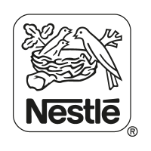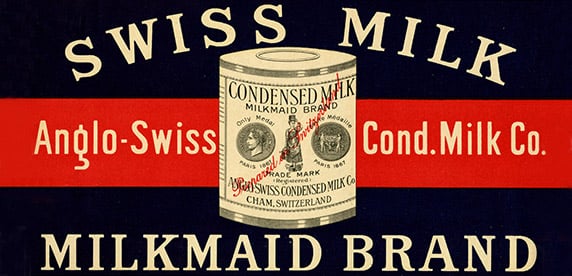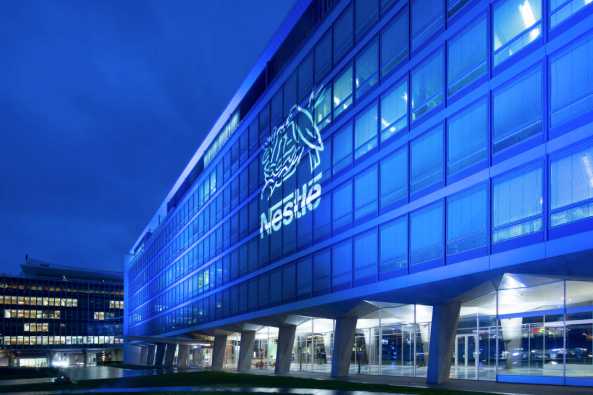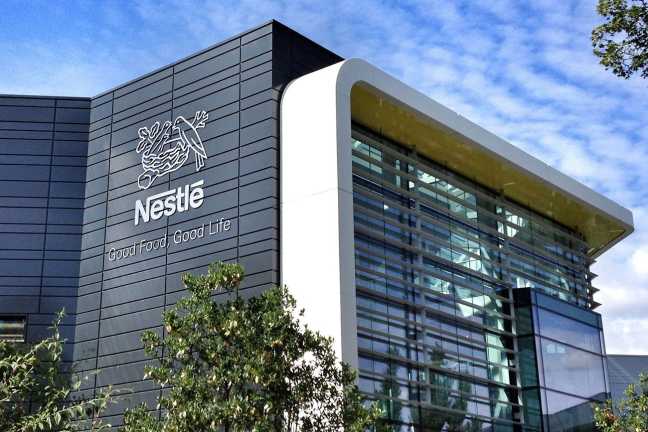Nestlé SA
Summary
- History: Henri Nestlé started an infant food namely ‘farine lactée’ in 1867 in Vevey, Switzerland. Another company Anglo-Swiss Condensed Milk Company is started in 1866 by the US brothers Charles and George Page, which in 1905 merged with Nestlé to become Nestlé Group. Thus, history of Nestlé starts in 1866.
- Headquarters: The company is headquartered at Vevey, Vaud, Switzerland.
- Management: Currently (June, 2022), Chairman of the Board of the company is Paul Bulcke and Chief Executive Officer is Mark Schneider.
- Industry & Products: The company belongs to fast moving consumer goods industry (FMCG). Products include baby food, coffee, dairy products, breakfast cereals, bottled water, PetCare products, ice cream and so on.
- Brands and company size (2021): The company currently operates 2,000+ brands in more than 186 countries in the world. It has around 270,000 employees all over the world. The company has established 354 factories in 79 countries as of 2021.
- Financial results (2021): The company has reported sales of CHF 87,088 million, operating income CHF 11,679 million, net income CHF 17,196 million, EPS CHF 6.06, ROE 32%, ROIC 17%, D/E 0.84, current ratio 0.98.
Company Overview
Nestlé SA is a Swiss-based food manufacturing conglomerate headquartered in Vevey, Vaud, Switzerland. It is the largest food manufacturing company in the world according to Forbes in 2020 measured by composite score of revenue, profit, assets, and market value.1
 According to the branding of the company, Nestlé is a Good food, Good life company. Purpose of the company is “Unlocking the power of food to enhance quality of life for everyone, today and for generations to come. That is our purpose.”
According to the branding of the company, Nestlé is a Good food, Good life company. Purpose of the company is “Unlocking the power of food to enhance quality of life for everyone, today and for generations to come. That is our purpose.”
More than 150 years ago, Henri Nestlé has started what is today, Nestlé. The company currently operates 2,000+ brands in more than 186 countries in the world. It has around 270,000 employees all over the world. The company has established 354 factories in 79 countries as of 2021. Portfolio of the company covers almost every food and beverage category – offering products and services for all stages of like, every moment of the day, helping people care for themselves and their families.
The company is headed by Mark Scheider as the CEO (Chief Executive Officer). Paul Bulcke is the Chairman of the Board of the company in 2022.
Group Structure and Shareholders
Nestlé Group is listed on the stock markets of countries worldwide as the company itself or the subsidiaries.2 Nestlé S.A. shares are listed on the SIX Swiss Exchange in Switzerland. On December 31, 2021, the market capitalization of the company was CHF 351,682,442,600.
Major shareholders of the company include BlackRock Inc., New York, who holds 4.998% of Nestlé S.A.’s share capital. The capital Group Companies, Inc., Los Angeles, directly or indirectly holds 3.55% of the company’s share. All the other shareholders, as per the best knowledge of Nestlé S.A., hold less than 3% of the company’s stake.
History of Nestlé
Henri Nestlé, a trained pharmacist, develops a breakthrough infant food in 1867 namely ‘farine lactée’ (‘flour with milk’) and launches it in Vevey, Switzerland. The product combines cow’s milk, wheat flour and sugar, and Nestlé develops it for the infants who cannot be breastfed. The ‘Nest’ logo of the group came into being around this time.
However, the history starts 1 year back in 1866 when US brothers Charles and George Page had established Anglo-Swiss Condensed Milk Company, which would merge with Nestlé to become Nestlé Group in 1905. They established their first condensed milk production facility in Cham and they ran the Milkmaid brand.

In 1875, Henri Nestlé sells his company and factory in Vevey to three local businessmen, who employ chemists and skilled workers to help expand production and sales. A fierce competition grows between Nestlé and Anglo-Swiss by 1878 as when they both started developing and selling each other’s products. Both companies expanded sales and production outside Switzerland.
Death of one of the founders of Anglo-Swiss, George Page, leads the company into troubles. This in the end leads to the merger of Anglo-Swiss with Nestlé to form Nestlé Group in the ensuing years. In 1882, Anglo-Swish expanded into the US; but the death of George Page compels it to sell its US operation in 1902, which paves the way into eventually merging with Nestlé.
In partnership with Peter & Kohler, Nestlé begins selling chocolates in 1904. Basically, Daniel Peter used the condensed milk of Nestlé from back in 1880s as his raw material of chocolate production.
Anglo-Swiss and Nestlé merge in 1905 to initially form Nestlé & Anglo-Swiss Milk Company. The company had more than 20 factories and started using its subsidiaries to establish a sales network across Africa, Asia, Latin America and Australia. It had two offices – one in Veyvey and another in Cham. It opened a third office in London to drive dairy export sales. Over several years the company expands its range to include unsweetened condensed milk and sterilised milk. As World War One approaches, the firm benefits from the period of prosperity known as the Belle Époque or ‘Beautiful Age’, and becomes a global dairy company.
When the World War I was over in 1918, the skyrocketing demand for Nestlé’s canned milk slid to such a level as to lead the company into first-time, and one time so far, loss in its lifetime. The company experienced falling prices and high stock levels in 1921. As a measure to recover from that situation, banker Louis Dapples joins as Crisis Manager, and encourages the company to appoint professional manager for the first time. The company centralizes its administration and consolidates its research laboratory in Vevey Switzerland.
The company meets a tough time again due to the great depression in 1929. Purchasing power of the customers decreased significantly during that time. However, in 1929, The company buys Switzerland’s largest chocolate company Peter-Cailler-Kohler, the origins of which date back to 1819 when François Louis Cailler creates one of the country’s first chocolate brands Cailler. Chocolate now becomes an integral part of the Nestlé & Anglo-Swiss business.
Malted chocolate drink Milo is launched in Australia in 1934, and its success means it is later exported for sale in other markets. The company continues to develop baby and infant foods in this inter-war period, and launches Pelargon in 1934, a full-milk powder for babies enriched with lactic acid bacteria, to improve its digestibility.
A competitive market for chocolate in Switzerland encourages Nestlé-Peter-Cailler-Kohler to innovate by launching Galak white chocolate and Rayon, a chocolate with honey and air bubbles, the next year. Vitamins are a major selling point for healthy products in the 1930s, and Nestlé launches vitamin supplement Nestrovit in 1936.
Nescafé is launched in 1938 as a ‘powdered extract of pure coffee’ that retains coffee’s natural flavour, but can be prepared by simply adding hot water. The product is the brainchild of Max Morgenthaler, who begins work on it in 1929, when the Brazilian government asks Nestlé & Anglo-Swiss to find an outlet for its huge coffee surplus.
The outbreak of World War Two in 1939 affects virtually every market, but Nestlé & Anglo-Swiss continues to operate in difficult circumstances, supplying both civilians and armed forces. In 1947, the company adds Maggi soups and seasonings to its product range, and adopts the name Nestlé Alimentana.
Fearing that the Axis powers could occupy Switzerland, Nestlé & Anglo-Swiss relocates some managers to a new office in Stamford in the US, which operates as the company’s second headquarters during the war. The fighting in Europe makes it impossible for Nestlé to export milk from there, so the company supplies Africa and Asia from the US and Australia, and expands production in Latin America by 1939. World War Two initially slows sales of Nescafé, but they pick up as hostilities continue. After the US enters the war, Nestlé brands rapidly gain popularity among American service personnel. At the end of the war, Nescafé is also included in CARE aid supplies in Japan and Europe. Nestea is launched in the late 1940s.
In 1943, Nestlé & Anglo Swiss merges with Swiss company Alimentana, which produces Maggi soups, bouillons and seasonings, and is renamed Nestlé Alimentana. Alimentana’s history dates back to 1884, when Julius Maggi developed a protein-rich dried soup to tackle malnutrition. The post-war period is marked by growing prosperity, and people in the US and Europe spend money on machines that make life easier, such as refrigerators and freezers. They also favour convenience foods, and Nestlé Alimentana meets this need with new products including Nesquik and Maggi ready meals.
In 1948, In the US Nestlé Alimentana launches a soluble tea, Nestea, which is manufactured using the same method as Nescafé, and can be served both hot or cold. Nesquik, which dissolves easily in cold milk, is also launched in the US and becomes a top seller. Nestlé infant cereal has been available since 1948 as a powdered product, but it is rebranded as Cerelac in 1954. Originally only sold as a bouillon cube, Maggi seasoning brand Fondor is launched as a powder. Packaged in a convenient shaker, it can now be used as a condiment in the dining room, as well as in the kitchen.
Canned ravioli is launched under the Maggi brand in 1957. Its huge success prompts Nestlé to launch more canned, prepared foods, which become a new growth segment.
Acquisitions enable Nestlé to enter fast-growing new areas such as frozen foods, and to expand its traditional businesses in milk, coffee and canned foods. In the 1970s the company diversifies into pharmaceuticals and cosmetics. It starts to attract criticism from activist groups that allege its marketing of infant food is unethical. Nestlé later becomes one the first companies to apply the WHO code on breast-milk substitutes across its business.
1981 to 2005
During the years from 1981 to 2005, following years of growth, Nestlé disposes of unprofitable brands and promotes those that satisfy increasingly health-conscious consumers, in line with its new ‘Nutrition, Health and Wellness’ ambition. The company expands in the US, Eastern Europe and Asia, and targets for global leadership in water, ice cream and animal food.
In the period from 1981 to 2005, Nestlé made a series of acquisitions. In acquired US-based Carnation Company for USD 3 billion in 1985, UK confectionery company Rowntree Machintosh in 1988, Perrier Group of France in 1992, Italian mineral waters business Sanpellegrino Group in 1998, US pet food business Ralston Purina in 2001, licensing rights to premium producer Häagen-Dazs in the US and Canada in 2002, and Mövenpick and Dreyer’s Grand Ice Cream in 2003. The company also merged with Ralston Purina, after buying it in 2001, its pet care business Nestlé Friskies Petcare in the same year to establish the new market leader in pet care – Nestlé Purina Petcare.
During the same period, the company did a lot of expansions, product-wise. The company launched Stouffer’s Lean Cuisine in 1981, Carnation and Coffee-Mate in 1985, Nespresso in 1986, KitKat, After Eight and Smarties in 1988, Nestea in 1991, Nestlé Waters in 1993 – renamed in 2002, Nestlé Pure Life and Aquarel in 1998.
2006 to today
Nestlé made a series of acquisition again from 2006 to onward. It acquired Jenny Craig and Australian breakfast cereals company Uncle Toby’s in 2006, Novartis Medical Nutrition, baby food company Gerber, and Swiss mineral waters concern Sources Minérales Henniez in 2007, Kraft Foods’ frozen pizza business in 2010, Wyeth Nutrition in 2012, US-based medical foods company Pamlab in 2013, Zenpep, Vital Proteins and Aimmune in 2020, and Essentia and Nuun in 2021.

During this period of time, the company sells several of its business segments and ends ties with some businesses. In the meantime, it has created some newer joint ventures, reduced control in some and increased control in other joint ventures. In 2013, the company sold its weight management business Jenny Craig in America and Oceania. With the creation of Nestlé Skin Health, Nestlé takes full control of the Galderma dermatology joint venture which it created with L’Oréal in 1981. The companies also end their joint venture Innéov, a cosmetic nutritional supplements business launched in 2002. Galderma subsequently acquires some of its assets. The company sold French frozen foods business Davigel in 2015. In 2018, Nestlé and The Coca-Cola Company end their Beverage Partners Worldwide joint venture. The company closes the sale of Nestlé Skin Health, and sells 60% of its stake in Herta and creates a joint venture with Casa Tarradellas. The company sells its business of Yinlu peanut milk and canned rice porridge in 2020. In 2021, the company sold the water business segment Nestlé Waters North America brands with a view to transforming its business strategy. In the same year, the company reduces its stake in L'Oréal.
In this period of time, Nestlé articulates its Creating Shared Value approach to business for the first time, and launches its Nestlé Cocoa Plan and Nescafé Plan to further develop sustainable supply chains in cocoa and coffee. While strengthening its position in traditional segments, infant formula and frozen foods, Nestlé strengthens its focus on medical nutrition.
Summary of the history of Nestlé SA
A steady growth of Nestlé has been reported throughout the years in the above paragraphs. What has started in 1867 in the hands of Henri Nestlé, has fared through time with hundreds of mergers, starting with merger with Anglo-Swiss in 1905.
Whenever Nestlé saw a product doing great in the market and it wished to develop it, it sought a company that sells that product and merged with it or acquired it or entered into a join venture with it. Thus, Nestlé included many a product into its portfolio over time such as chocolates, Maggi soup, and Petcare. The company used to acquire another business and make a different unit that deals with certain products. Examples exist such as Nestlé Purina, Nestlé & Anglo-Swiss, Nestlé-Peter-Cailler-Kohler and so on. The development of new products always came from the demand in markets and a careful consideration of Nestlé group about the nutrition and convenience of its target consumers.

The operation of Nestlé has been a perfect example of a ‘company with negative beta’ during both world wars. During WWI, the company’s canned milk has become the major food item into the militaries since it was easy to carry and store. Similar picture sustained during WWII. The demand for the products of Nestlé skyrocketed during these years. However, the company suffered afterwards though, the toughest year being 1921. During great depression, the demand for the products of Nestlé dipped as the consumers remained confused between spending and saving. Also, the great depression caused worldwide fallout of markets and suffering of the people and governments which impacted the sales of Nestlé.
With the right strategy on board, the company always profited from however tough the years be. A spate of acquisition and merger took place during 1981 to 2005. Also, the company dropped some of its businesses during these years. From 2006 to this day, the company again made a series of acquisitions and dropped several businesses as well as joint ventures and partnerships.

Corporate strategy of Nestlé SA
With its motto “Good Food, Good Life”, Nestlé SA has adopted a winning business strategy that, according to the CEO Mark Schneider’s remark in 2019 interview with the New York Times, seeks to strike a balance between being virtuous and profitable in the business at the same time. The company focuses its energy and resources in unlocking the power of food to make greatest positive impact on the lives of people and pets.
The business strategy of Nestlé stands on three pillars as explained below
Growth through continuous innovation: The business strategy of Nestlé sets a goal to maintain mid single-digit organic sales growth by maintaining a diversified portfolio both in terms of geography and category. The agility of the company in changing environments and its cultivation of high-quality global, local and regional brands contribute to long-term financial performance. The company ensures its targeted growth through rapid innovation, market share gains and portfolio management.
Operational efficiency: The growth agenda of Nestlé is fuelled by its disciplined cost management to improve operational efficiency at all levels of the business. This strategy together with the sales growth helps the company to free up resources for reinvestment in product innovation, brand building, digitalization, and sustainability initiatives.
Prudent capital allocation: The company invests in the long-term growth and development of its business. But in doing so, the company first ensures improvements in the shareholder’s return and shared value with the other stakeholders. The company takes a disciplined approach to capital allocation, with prudent financial policies designed to strike the right balance between growth, returns and flexible access to financial markets.
The company bases its value-creation strategy centring the customers. It understands and serves its customers by identifying trends early and acting quickly to capture them. The company capitalizes on the increasing importance that people put on good nutrition and health management. The preference of the people for products with simple, understandable ingredients, natural or organic, and ideally locally produced is a major foothold of the business design of Nestlé.
Nestlé has the largest research and development network in the food and beverages industry, continually innovating and renovating our portfolio to meet changing consumer demands. Nestlé offers a range of affordably-priced, high‑quality, nutritious products. Many of their foods and beverages, especially those for children, include added micronutrients such as iron, iodine, vitamin A and zinc to support good health and well‑being.
Creating shared value is another fundamental principle of Nestlé’s way of doing business. The company sets its strategy to maximise value for the shareholders as well as for the society at the same time.
Locations of Nestlé
Nestlé is headquartered at Avenue Nestlé 55, Vevey, Switzerland. In the United States, the office is at 1812 N Moore St, Arlington, United States. The company has its corporate offices in at least 115 locations worldwide and it has 354 factories in 79 countries around the globe. The list of countries in which the company has corporate office is given below –
| Africa | Americas | Asia | Europe | Oceania |
| Algeria | Argentina | Bahrain | Austria | Australia |
| Angola | Bolivia | Bangladesh | Belarus | Fiji |
| Benin | Brazil | Cambodia | Belgium | New Caledonia |
| Burkina Faso | Canada | China Mainland, Greater China | Bosnia & Herzegovina | New Zealand |
| Cameroon | Caribbean | Hong Kong SAR, Greater China | Bulgaria | Papua New Guinea |
| Chad | Chile | India | Croatia | Polynesia |
| Congo- Kinshasa | Colombia | Indonesia | Czechia | |
| Côte d’Ivoire | Costa Rica | Iran | Denmark | |
| Egypt | Cuba | Israel | Finland | |
| Gabon | Dominican Republic | Japan | France | |
| Ghana | Ecuador | Jordan | Germany | |
| Kenya | El Salvador | Kazakhstan | Gibraltar | |
| Mauritius | Guatemala | Kuwait | Greece | |
| Morocco | Haiti | Lebanon | Hungary | |
| Mozambique | Honduras | Malaysia | Ireland | |
| Nigeria | Jamaica | Oman | Italy | |
| Senegal | Mexico | Pakistan | Malta | |
| South Africa | Nicaragua | Philippines | Netherlands | |
| Tunisia | Panama | Qatar | North Macedonia | |
| Zambia | Paraguay | Saudi Arabia | Norway | |
| Peru | Singapore | Poland | ||
| Puerto Rico | South Korea | Romania | ||
| Trinidad & Tobago | Sri Lanka | Russia | ||
| United States | Syria | Serbia | ||
| Uruguay | Taiwan, Greater China | Slovakia | ||
| Venezuela | Thailand | Slovenia | ||
| Turkey | Spain | |||
| United Arab Emirates | Sweden | |||
| Uzbekistan | Switzerland | |||
| Vietnam | Ukraine | |||
| United Kingdom |
- ^ https://www.forbes.com/sites/chloesorvino/2020/05/13/the-worlds-largest-food-and-restaurant-companies-in-2020/?sh=1494cd33262d
- ^ See Financial Statements 2021, p.154 for complete list. Available at: https://www.nestle.com/sites/default/files/2022-03/2021-corp-governance-compensation-financial-statements-en.pdf




